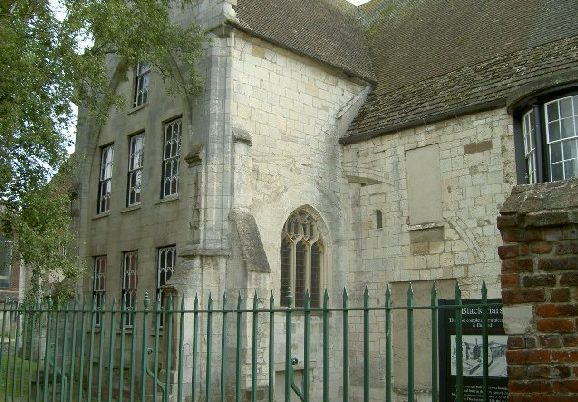Blackfriars, Gloucester on:
[Wikipedia]
[Google]
[Amazon]


 Blackfriars,
Blackfriars,

accessed 7 June 2017
/ref> His widow, Anne Hooper and other Blackfriars clergy were exiled abroad. Hooper and her daughter, Rachel, died inVisitBritain website
The friary includes a notable fine, scissor-braced, dormitory roof.
Blackfriars at English Heritage
Detailed historical record for Gloucester Blackfriars
{{coord, 51.864107, -2.248662, type:landmark_region:GB_source:Wikimapia_scale:2000, name=Gloucester Blackfriars, display=title Monasteries in Gloucestershire History of Gloucester Buildings and structures in Gloucester English Heritage sites in Gloucestershire Grade I listed buildings in Gloucestershire 1239 establishments in England 1539 disestablishments in England Christian monasteries established in the 13th century
Gloucester
Gloucester ( ) is a cathedral city and the county town of Gloucestershire in the South West of England. Gloucester lies on the River Severn, between the Cotswolds to the east and the Forest of Dean to the west, east of Monmouth and east o ...
, England, founded about 1239, is one of the most complete surviving Dominican black friaries in England.BlackfriarsEnglish Heritage
English Heritage (officially the English Heritage Trust) is a charity that manages over 400 historic monuments, buildings and places. These include prehistoric sites, medieval castles, Roman forts and country houses.
The charity states that i ...
, 2011. Retrieved 3 January 2012.
Now owned by English Heritage
English Heritage (officially the English Heritage Trust) is a charity that manages over 400 historic monuments, buildings and places. These include prehistoric sites, medieval castles, Roman forts and country houses.
The charity states that i ...
and restored in 1960, it is currently leased to Gloucester City Council and used for weddings, concerts, exhibitions, guided tours, filming, educational events and private hires. The former church, since converted into a house, is a Grade I listed building
In the United Kingdom, a listed building or listed structure is one that has been placed on one of the four statutory lists maintained by Historic England in England, Historic Environment Scotland in Scotland, in Wales, and the Northern Irel ...
.

History
The Monastery, known as Blackfriars from the black cloaks the friars wore, was founded on a site west of Southgate Street, with the city wall adjacent to the south. It comprised a church and a quadrangle formed by such buildings as the scriptorium (library), the dormitory with its renowned scissor-braced roof and the cloisters. It was established around 1239 under the patronage of Henry III and at its height was home to 30-40 friars. The friary went into private hands after the Dissolution of the Monasteries, having been purchased for £240 in 1539 by Thomas Bell (died 1566), who converted the church to his residence and transformed the buildings of the cloister, including the scriptorium, into a cap manufactory. The conversion of the church into a grand mansion was completed by 1545, which Bell referred to in his will as "My howse called Bell Place". The nave and chancel were shortened approximately each by a half, either side of the central crossing, of which latter the southern member, extending into the cloister, was removed. Upper floors and stone mullioned windows were added above the outer aisles, a semi-circular bay window being also added to the north side of the nave. The great window at the north end of the northern transept was built in, and replaced with several smaller windows. In 1555 John Hooper, the Bishop of Gloucester, was burnt to death for his beliefs.Rachel Basch, ‘Hooper, Anne (d. 1555)’, Oxford Dictionary of National Biography, Oxford University Press, April 201accessed 7 June 2017
/ref> His widow, Anne Hooper and other Blackfriars clergy were exiled abroad. Hooper and her daughter, Rachel, died in
Frankfurt
Frankfurt, officially Frankfurt am Main (; Hessian: , " Frank ford on the Main"), is the most populous city in the German state of Hesse. Its 791,000 inhabitants as of 2022 make it the fifth-most populous city in Germany. Located on it ...
in 1555 of the plague. Anne left money to her son.
A 1721 image of the complex by William Stukeley
William Stukeley (7 November 1687 – 3 March 1765) was an English antiquarian, physician and Anglican clergyman. A significant influence on the later development of archaeology, he pioneered the scholarly investigation of the prehistoric ...
provides valuable information about the friary at that time.
In the 1930s Bell Place was converted into 2 dwellings. Restoration work on this former church was completed in 1984, when it was opened to the public.
The cloister buildings were converted from former cap factory into dwellings in the 18th century, and part of the west range was heightened and converted into three houses. Bell bequeathed Blackfriars to his niece Joan and her husband Thomas Denys, son of Sir Walter Denys of Dyrham Park, in which family it remained until c. 1700. Both the ancient gateways to the Blackfriars have been removed, one before 1724, the other having collapsed c. 1750. One had become known as Lady Bell's Gate, which is memorialised in the modern street name "Ladybellegate", onto which the western cloister faces.
The site is today the most complete surviving Dominican priory in Britain, containing the oldest surviving purpose-built library in the country.See also
* Greyfriars, Gloucester * Whitefriars, GloucesterReferences
External links
Blackfriars at English Heritage
Detailed historical record for Gloucester Blackfriars
{{coord, 51.864107, -2.248662, type:landmark_region:GB_source:Wikimapia_scale:2000, name=Gloucester Blackfriars, display=title Monasteries in Gloucestershire History of Gloucester Buildings and structures in Gloucester English Heritage sites in Gloucestershire Grade I listed buildings in Gloucestershire 1239 establishments in England 1539 disestablishments in England Christian monasteries established in the 13th century
Gloucester
Gloucester ( ) is a cathedral city and the county town of Gloucestershire in the South West of England. Gloucester lies on the River Severn, between the Cotswolds to the east and the Forest of Dean to the west, east of Monmouth and east o ...
Historic house museums in Gloucestershire